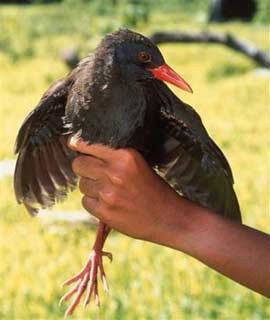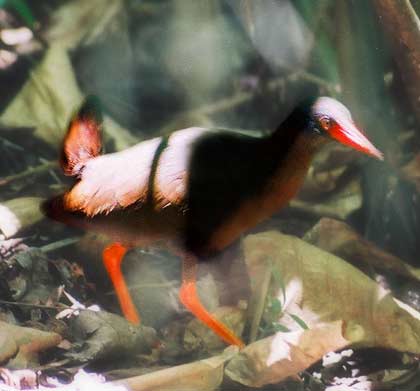 |
|
(Photo: unexplainedresearch) |
According to a report from Reuters in Johannesburg, South Africa, on August 17: conservationists from the International Bird Organization announced that scientists have discovered a flightless bird on a remote island in the Philippines.
The discovery of this rare bird is particularly striking because flightless birds on small islands are especially vulnerable to extinction due to human activities. Many species that lived on islands have been scientifically classified as extinct long before their bones were unearthed by biologists. The International Bird Organization plans to name this new bird the Calayan Rail, with the scientific name Gallirallus calayanensis.
This new species, roughly the size of a crow, was found on Calayan Island, located 40 miles off the northern coast of the Philippines.
“The Calayan Rail is a relative of the familiar red junglefowl found worldwide, featuring a beak and legs that are bright red, contrasting with its black plumage,” stated the International Bird Organization. “However, unlike its more familiar relative, the Calayan Rail is flightless or nearly so, and it was discovered on an island only after it was named.” Each year, one or two new bird species are identified, but the flightless nature of this rail, along with its unexplored location, makes it particularly intriguing. “This bird is an exception because it cannot fly, and no ornithologist has visited this island since 1903,” Dr. Richard Thomas told Reuters from Birdlife International’s headquarters in the UK.
Genevieve Broad, a biologist and one of the leaders of the Philippine-British expedition, believes that isolation has protected this rare bird from human encroachment. She noted: “The island covers an area of 186 square kilometers (72 square miles) and has only 8,500 residents concentrated in the south. Very few people live in the center of the island (where the rare bird was found) because there are no roads there.”
Isolation has led to the tragic past of flightless birds. Many flightless birds evolved on remote islands without predators, becoming what biologists refer to as “ecologically naive” — meaning they lack the ability to recognize threats from other animals. Thus, when humans first set foot on small islands in the past, they found flightless birds to be an easily exploitable source of protein and exterminated them. The dodo bird of Mauritius in the Indian Ocean is the most famous example.
Most of the 22 rail species that have gone extinct since 1600 were flightless birds. Of the 20 existing flightless bird species, 18 are considered endangered.

(Photo: lakbaypilipinas)


















































